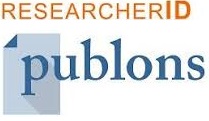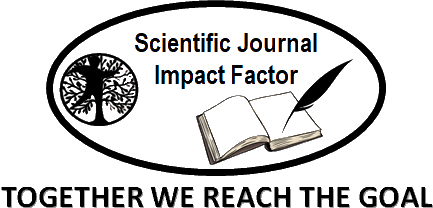Fear And Anxiety In Oral Care Among Dentists
Abstract
Introduction: Dental anxiety and fear represent a significant challenge in oral care, directly affecting the frequency of dental visits and the overall quality of oral health. This globally prevalent phenomenon manifests in various forms – from mild discomfort to severe phobia – often leading to avoidance of necessary dental treatments. However, early identification of contributing factors and the implementation of appropriate interventions can significantly aid in managing this fear.
Aim of the study: To assess the level and main sources of patients’ fear toward dental treatments and to provide practical recommendations for reducing this fear based on collected data.
Methodology: This study was conducted systematically at the “Kristal Dent” Specialist Dental Clinic in the city of Ferizaj during the period April–June 2024. A descriptive cross-sectional research design was applied, using the internationally validated and standardized instrument — the Index of Dental Anxiety and Fear (IDAF-4C+), developed by Armfield (2010), which covers the emotional, physiological, cognitive, and behavioral components of dental fear. Participants (n = 95) were selected using non-probabilistic purposeful sampling, including adult patients who had undergone at least one dental procedure in the last six months. Data were collected through self-reporting under researcher supervision to ensure accuracy and avoid misinterpretation. Statistical analysis was performed using IBM SPSS Statistics version 26. Descriptive methods (percentages, mean) and inferential tests (t-test for gender groups and ANOVA for age groups) were used, with a significance level set at p < 0.05.
Results: Data analysis showed that 44.81% of respondents reported no fear of dental treatment, 25.43% reported mild fear, 16.32% moderate fear, 9.66% high fear, and 3.77% suffered from extreme fear. Female participants reported higher levels of fear compared to male participants, with an average difference of 22%. Statistical analysis did not show significant differences in fear levels based on age groups.
Conclusions: Building a trust-based relationship between the dentist and the patient is essential for reducing dental fear. Clear communication, a relaxing clinic environment, and involvement of staff trained in managing patient anxiety are key factors in enhancing the treatment experience. The implementation of these approaches may lead to greater patient engagement in their oral care and improvement in overall dental health.
Keywords
Full Text:
PDFReferences
. Alsanawi, E. A., Abusaris, R., & El-Metwally, A. A. (2019). Cross-cultural adaptation and validation of the Arabic version of the Index of Dental Anxiety and Fear (IDAF-4C). Journal of Oral Science, 229-237.
. American Psychiatric Association. (2022). Diagnostic and statistical manual of mental disorders. Washington, DC: American Psychiatric Association.
. APA Dictionary of Psychology. (19. prill 2018). Von American Psychological Association: https://dictionary.apa.org/fear abgerufen
. Armfield, J. (2010). The role of expectation in dental fear. Community Dentistry and Oral Epidemiology, 72-79.
. Armfield, J. M. (2010). Development and psychometric evaluation of the Index of Dental Anxiety and Fear (IDAF-4C). Psychological Assessment, 279-287.
. Armfield, J. M., & Ketting, M. (2015). Predictors of Dental Avoidance Among Australian Adults With Different Levels of Dental Anxiety. Health Psychology Vol. 34, 929-940.
. Åstrøm, A. N., Agdal, M. L., & Sulo, G. (2022). Exploring avoidance of dental care due to dental fear and economic burden –A cross-sectional study in a national sample of younger adults in Norway. International Journal of Dental Hygiene Vol. 22 Issue 1, 148-157.
. Carter, A. E., Carter , G., Boschen, M., AlShwaimi, E., & George, R. (2014). Pathways of fear and anxiety in dentistry: A review. World Journal of Clinical Cases, 642-653.
. Freeman, R., & Humphris, G. (2019). Dental Anxiety, Communication and the Dental Team: Responses to Fearful Patients. Journal of the California Dental Association Vol. 47, 495-500.
. Gazzaz, L., Splieth, C., & Meyer, G. (2012). Impact of dentist-patient interactions on dental fear. Patient Education and Counseling, 404-409.
. Klages, U., Ulusoy, O., & Kianifard, S. (2010). Family influence on dental fear. Journal of Dental Research, 329-333.
. Mandel, A., Breslin, P., & Beauchamp, G. (2010). Individual differences in AMY1 gene copy number, salivary α-amylase concentration, and oral perception of starch viscosity. PLoS ONE.
. Schuller, A., Kvale, G., & Skaret, E. (2014). Psychosocial consequences of dental fear and anxiety. Community Dentistry and Oral Epidemiology, 98-106.
. Silveira, E. R., Cademartori, M. G., Schuch, H. S., Armfield, J. A., & Demarco, F. F. (2021). Estimated prevalence of dental fear in adults: A systematic review and meta-analysis. Journal of Dentistry Volume 108, Artikulli 103632.
. Skaret, E., & Lars-Göran, Ö. (2013). Cognitive Behavioral Therapy for Dental Phobia and Anxiety. Chichester, West Sussex, PO19 8SQ, UK: John Wiley & Sons, Ltd.
. World Health Organization. (2019). International Statistical Classification of Diseases and Related Health Problems 10th Revision. Genf: World Health Organization.
. Zinke, A., Hannig, C., & Berth, H. (20. Nëntor 2018). Comparing oral health in patients with different levels of dental anxiety. Head & Face Medicine 14, S. 25.
DOI: http://dx.doi.org/10.52155/ijpsat.v50.2.7224
Refbacks
- There are currently no refbacks.
Copyright (c) 2025 Donjeta Hashani Ahmeti, Arben Ahmeti

This work is licensed under a Creative Commons Attribution 4.0 International License.



















